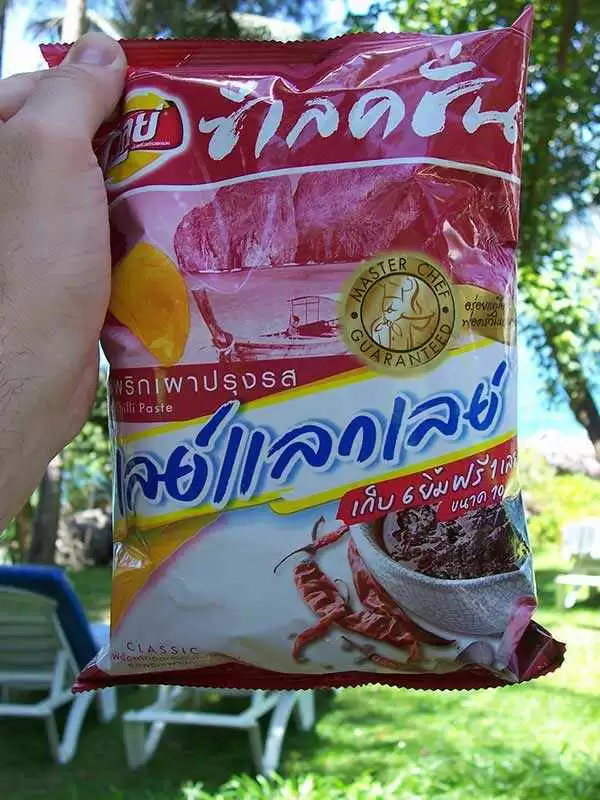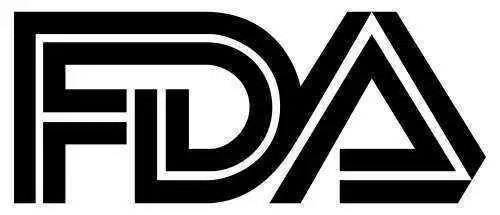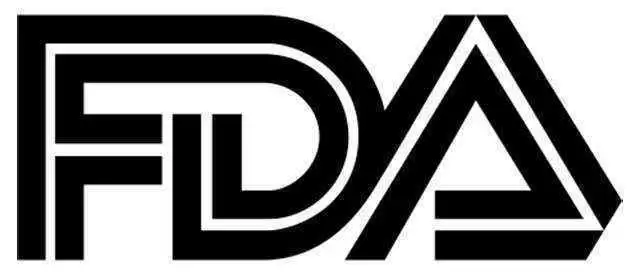
Celiac.com 02/04/2017 - Did you know that on August 2, 2013 the FDA published a regulation defining the term "gluten-free" for voluntary food labeling? According to that regulation, products labeled gluten-free must contain less than 20 ppm (parts per million) of gluten. The rule applies to all FDA regulated foods including dietary supplements. Manufacturers have until August 5, 2014 to bring package labels into compliance. After that, foods labeled 'gluten-free' that contain 20 ppm or more of gluten will be deemed misbranded and manufacturers will be subject to regulatory enforcement action.
The Celiac Disease Foundation applaud the FDA for ensuring that food products labeled gluten-free will be safe for consumption. Ms. Geller, Chief Executive Officer of the Celiac Disease Foundation states that, "the celiac community, the CDF Medical Advisory Board, and our colleagues from the American Celiac Disease Alliance, Celiac Sprue Association/, Gluten Intolerance Group and National Foundation for Celiac Awareness, joined with CDF in a determined and collaborative effort for a federal gluten-free labeling standard."
Celiac.com Sponsor (A12):
CDF Founder, Elaine Monarch, one of the first to advocate for a federal gluten-free standard stated "Congratulations to the FDA for acknowledging the dietary requirements of people with celiac disease with this important ruling. I am extremely pleased that the FDA has established a definition of gluten-free that will enable easier identification of appropriate foods for us." Ms. Monarch explains, "There is no pill for us, a gluten-free diet is the only treatment for celiac disease. That makes food both our drug and potentially our poison."
Even though manufacturers have until August 5th of next year to comply with the new rule, the FDA is encouraging the food industry to come into compliance as soon as possible. Joseph Murray, MD, Professor of Medicine, Mayo Clinic and CDF Medical Advisory Board Member declared. "This long awaited regulation defining what a label saying 'gluten-free' means goes a long way to help build consistency in food labeling which will make it easier for people who need to be gluten-free to select food items. Manufacturers now know exactly what gluten-free means and will hopefully begin using this voluntary labeling standard immediately to provide safe food with clear information for consumers."
If the Celiac Disease Foundation can applaud the FDA Food Labeling Rule defining "gluten-free" we can do the same. Then comes the Question, "What food products are covered by the FDA gluten-free labeling rule?
Covered:
- All FDA regulated foods
- Dietary Supplements (vitamins, herbs, amino acids)
- Imported food products that are subject to FDA regulations
Not Covered:
- Meat, poultry and unshelled eggs (and any other products regulated by the USDA).
- Distilled spirits and wines that contain 7% or more alcohol by volume **
- Malted beverages made with malted barley or hops **
**These alcoholic beverages are regulated by the Alcohol and Tobacco Tax and Trade Bureau (TTB). The FDA says it will work with the TTB to " harmonize" gluten-free labeling requirements between the two agencies.
AFTER August 5, 2014 What food products may be labeled gluten-free? A food product regulated by the FDA may be labeled gluten-free if:
- It does NOT contain wheat, rye, barley or their crossbred hybrids like Triticale (a gluten-containing grain) OR
- It contains a gluten-containing grain or an ingredient derived from a gluten containing grain that has been processed to less than 20 parts per million (ppm) of gluten
- May food products that are naturally gluten-free be labeled "gluten-free"? [YES - Food products that are naturally gluten-free, like bottled spring water or tomatoes may be labeled "gluten-free"]
- May oats be labeled gluten-free? Oats that contain less than 20 ppm of gluten may be labeled "gluten-free". Oats do not need to be certified gluten-free.
AN ASIDE: This surprises me because the oat controversy and oat sensitivity battle has been going on for years. According to many experts in the field of gluten sensitivity the suitability of oats in the gluten-free diet is still somewhat controversial. Some research suggests that oats in themselves are gluten-free, but that they are virtually always contaminated by other grains during distribution or processing.
According to Wikipedia, " Recent research, however, indicated that a protein naturally found in oats (avenin) possessed peptide sequences closely resembling wheat gluten and caused mucosal inflammation in significant numbers of celiac disease sufferers. Some examination results show that even oats that are not contaminated with wheat particles are nonetheless dangerous, while not very harmful to the majority. Such oats are generally considered risky for children with celiac disease to eat, but two studies show that they are completely safe for adults with celiac disease to eat. People who are merely "gluten sensitive" may be able to eat oats without adverse effect, even over a period of five years. Given this conflicting information, excluding oats appears to be the only risk-free practice for celiac disease sufferers of all ages. However, medically approved guidelines exist for those with celiac disease who do wish to introduce oats into their diet.
Unless manufactured in a dedicated facility and under gluten-free practices, all cereal grains, including oats, may be cross-contaminated with gluten. Grains become contaminated with gluten by sharing the same farm, truck, mill, or bagging process. As mentioned in the Winter 2012 "Did You Know" article "grain standards for the United States and Canada allow a set percentage of foreign grains to be present in packages of particular grains. By definition then, oats may contain up to 25 percent of wild oats and other grains for which standards have been established under the United States Grain Standards Act.
Research has shown, and the FDA acknowledges, that regular oats pose a risk to celiac consumers due to contamination." Today wheat is made to grow shorter and with bigger seeds to have a higher yield", explains Dr. Murray. "It is bred to be drought resistant, heat resistant, pest resistant and responsive to nitrogen fertilizer. All those things maximize the gluten content because it's important for its baking properties. To top it off, purified wheat gluten is added to foods such as high-fiber bread (because it helps the fibrous dough stick together and rise) and high protein bread, (because gluten is a protein).
One survey reported people experiencing a potential trigger within six months prior to symptom onset, including severe stress (23%), a severe gastrointestinal infection (9%), a pregnancy (8%) and a major surgery (7%). Yet, according to the FDA oats that contain less than 20 ppm of gluten do not need to be certified gluten-free yet they may be labeled "gluten-free".
Cross-contamination was the main reason why oats were considered unsafe in the past. Oats, wheat and barley are usually grown next to each other in farmers' fields, processed in the same grain elevators, milled with the same equipment, and transported using the same containers. Inevitably the grains co-mingle and the oats become contaminated with gluten grains.
An excellent book entitled "Celiac Disease, Safe/Unsafe Food List and Essential Information" by Jaqui Karr, C.S.N., C.V.D. should be in your celiac library. First released in 2010, Karr does not recommend oats for celiacs. Karr states that "There are a handful of studies going back more than 20 years showing celiac patients reacting to rice and/or corn. Yet most medical communities are accepting rice and corn as safe. Several doctors and scientists still feel that all grains are harmful to celiacs. "Be careful as gluten-free standards are not absolute." Karr wrote the book to as a guide to help identify potential areas of danger. "We do not know yet know what the long term effects of continuous digestion of small amounts of gluten are, and we know that in most cases the person will be suffering internal damage with no external symptoms."
We are not the only ones that are confused with the guidelines/rules and suggestions for the celiac. Different countries use different ingredients for the same food. Just one example is MSG. In the U.S. it is made from corn. Outside the U.S. it is usually made from wheat or soy. It is frustrating to read "Confirm with manufacturer" when you are expecting a list to tell you whether it is safe or unsafe. No list can truthfully claim to provide accurate information on every item without a few that require you to verify further.
If you look at diningoutglutenfree.com you will find a large list of the fast food chains that carry separate gluten-free menus. If these are well-known restaurant chains they will probably be checked regularly by the Health Board to ensure that the foods are prepared in a separate area and no appliances or serving cutlery has been used in both preparation areas. You don't want someone flitting from regular food to gluten-free foods at the same counter with no glove changes or counter changes. It is a matter of 'buyer beware' isn't it?
With two guests from England, we stopped for an afternoon tea at a well-known tea house in Victoria, Vancouver Island, Canada. It was a busy restaurant at 3:00 P.M., afternoon tea time. I broke another one of my rules: "Don't order during peak hours". I looked into the yummy dessert and pastry section of their glassed-in baked goods. I asked the young woman if they had any gluten-free items. She said, rather quickly, to look at the section on the top row on the left. She just pointed and went on her way.
I 'ummed and haa'd', and when she came back I asked again if this strawberry dessert was gluten-free. That was when I noticed that she had an accent from another country. She again flew her hands over the top row on the left, so I bought my dessert, even though they were just labeled "sugar free". How stupid I was! Well, I did enjoy the dessert while I ate it. During the night I was sick and sure enough 24 hours later out came the dermatitis herpetiformis spots—scalp first, as usual. I complained to my husband as I itched, telling him that I had asked. He stated that he had noticed me asking the woman about gluten-free, "but", he said, "those baked goods only said, "sugar free" meaning they were made with a sugar substitute.
After hearing that I had one of those thoughts about pausing and thinking. If it was twice the price as the other baked goods then it could be celiac-friendly, not just sugar free. The young woman's primary language was not English which should have registered with me. There should have been a bigger sign there saying, "Gluten Free". I itched my way through another three or four days of house-guests. When, eventually, I did call the restaurant (it is the only way we are going to get anywhere as a celiac community unfortunately, calling back and explaining what happened.) They apologized. They do not have gluten-free foods. They would mention it to the staff member.
My fault or theirs? MY FAULT. I should have explained to the young woman. Not everyone knows what gluten-free means, nor do they realize how sick we can become ingesting items containing gluten. She must have thought I meant sugar free. Am I going to beat up the server, who was likely a University student, or beat myself up, a person who can read and should have asked further when seeing just the "Sugar-Free" sign. Better to be thought a dummy than to be sick again.
Reminder; No matter what the front of the food package states, always, always read the back of the package. Yes, right to the bottom! Often they list ingredients by the volume used in the preparation of that food, and what is often at the very top is the largest proportion. But I have found the section they have not added in a lot of pre-packaged food—"May include" which can be an important listing for us, yet often it is in a little box by itself and not under ingredients at all. After all, it may not be included. But it could have been prepared with machines that process gluten.
Looking back to the May 2011 "Living Without Magazine", in an article entitled "Research Roundup" 'Working With Wheat'. Did You Know that a lot of people are getting on the band wagon for eating gluten-free without being checked for celiac disease, because they have "heard" you can lose weight on the celiac diet. Four reasons not to go gluten-free (if you don't have to). It seems to be a popular thing to do these days. "Hey, go on a gluten-free diet and you will lose weight!" They talk about sugar belly, and having a bloated stomach, but they fail to realize that products on the market are much higher in sugar, fat and total calories than their gluten containing alternatives, says Shelley Case, a registered dietitian from Regina, and author of The Gluten Free Diet: A Comprehensive Resource Guide "Manufacturers use ingredients containing gluten to help the products stick together and taste better." Gluten-free products are frequently produced by small manufacturers who aren't required to add iron, B vitamins and other nutrients you generally find in gluten-containing products. "A lot of them use white rice flour, tapioca, and corn and potato starches, which are low in fiber and don't offer much in the way of nutrition," says Shelley Case.
Gluten-free products are expensive. Dee Sandquist, a dietician who specializes in celiac disease states "In general, gluten-free packaged foods have added fat to make them look and taste better." Silly to go on a gluten-free diet to add more fats and receive a bad cholesterol overload! A 2008 study in the Canadian Journal of Dietetic Practice and Research found that gluten-free foods cost, on average, 242% more than conventional foods. If you add to that another five years of cost of living increases the percentage would be more today. The diet can interfere with your life. Eighty-one percent of the respondents to the Canadian Celiac Health Survey avoid going to restaurants and about 38 percent avoid traveling because of their eating restrictions. If you are wanting some foods to blame for your sugar belly or bloated belly, even if that bloated belly may be one sign of celiac disease, it can also be a sign of too many do-nuts, candies, or too much wine or beer.
Some, should I say most? people who do not have celiac disease, are not aware of the nutritional deficits a celiac can have in their diet. The disease can have long-term and sometimes fatal health consequences because your immune system basically begins to treat gluten as a harmful invader. Your body's first line of defense is to launch a kind of overkill response that wears away the hair-like protuberances called villi (A shag carpet that lines your small intestine). These waving bits of shag carpet aid in the absorption of nutrients into the bloodstream, but in people with celiac disease it is more like a tile floor that lets nutrients slip by, often leading to rapid weight loss and eventual malnutrition. Now if someone has told you that the celiac diet is a way to lose weight you can tell them that it is the celiac with the 'tile floor' small intestine that could be causing them to lose weight, but it can also lead to malnutrition, hair loss, nail breakage and dental problems. To go from a bad idea to a life threatening disorder be aware that because celiac disease is an autoimmune disease (like lupus and Crohn's disease), as it evolves it can impact other body systems causing chronic poor health, infertility in both men and women, miscarriages, osteoporosis and cancers of the gastrointestinal tract.
Unfortunately, because of the numerous ways it can manifest, celiac disease is devilishly hard to diagnose. A 2012 report from the Mayo Clinic estimated that about 1.8 million Americans had celiac disease, a dangerous immune response to gluten. Of those, 1.4 million are unaware they have it, says Joseph Murray, a gastroenterologist with the Mayo Clinic in Rochester, Minnesota. That means that in the USA, only 0.4 million people know they have celiac disease, and the other 1.4 million are going from doctor to specialist trying to find an accurate diagnosis for the baffling, often mysterious symptoms.
Another U.S. statistic I was surprised to hear was that 1.6 million Americans are currently on a gluten-free diet despite never having been diagnosed with celiac disease. "It is safe to say many people are eating gluten-free for no reason" says Murray. Is it just another hipster food diet like the oat bran diet. Health Canada estimates some 300,000 people suffer from celiac disease in Canada and many of them don't know it.
Have you noticed the mass influx of gluten-free foods in large food markets lately? Of course we are consumers, and we are a market that has not been fully served in the past. And they do not like to miss out on sales. A lot of the smaller stores do not realize how fastidious you have to be owning a restaurant or bakery selling foods that are gluten-free. If you are not preparing gluten-free foods in a separate area, under strict conditions that limit cross contamination, then you could be in a litigation line-up. Some people are severely allergic to gluten, and an outbreak of dermatitis herpetiformis is not a gift you want to give your customers.
AN ASIDE: I just tore out a complete recipe section from the Canadian Living Magazine. Although they have a disclaimer with regards to you checking the ingredients carefully to ensure the products are gluten-free. Of the seven recipes listed, all of them stating gluten-free, rolled oats and vinegar are in the recipes. There is information on what type of vinegar. Do all celiac people realize that malt vinegar should be avoided? And do all people with celiac disease realize the controversy with regard to oats?
I cannot tolerate oats, and why would you risk it when medical experts do not even know the long term effects of oat ingestion for the celiac? Don't forget that even the reason for the recent increase in celiac disease is unclear.
As mentioned, Dr. Murray points out that gluten is being used more frequently and in purer forms than it was in the past. To top it off purified wheat gluten is added to foods such as high-fibre bread (because it helps the fibrous dough to stick together and rise! And high protein bread, (because gluten is a protein), "I think it could be overexposure at certain times and in this very purified state," states Murray.
Shelley Case believes the theory that celiac disease and other conditions are being caused by junk diets and an overuse of antibiotics, which are changing the bacterial composition of the gut and killing off good bacteria. In either case, it seems likely that something activates the disease.
About 47% of the respondents to the Canadian Celiac Health Survey reported experiencing a potential trigger within six months prior to symptom onset, including severe stress (23%—go figure), a severe gastrointestinal infection (nine percent), a pregnancy (eight percent) and a major surgery (seven percent). This is congruent with my condition of celiac disease and DH. I was living on the irritable bowel disease diet in the November prior to my daughter's wedding the following January. She was very slow with the invitations, ideas, and plans. Working full time I was a nut case, and by December had so many connect the dots dermatitis herpetiformis sores I was contemplating shaving my hair off and wearing a bathing cap to the wedding!
Both Shelley Case and Murray urge patients to get diagnosed and treated for celiac disease before going gluten-free. In addition, without a diagnosis of celiac disease, patients are less likely to be monitored for celiac-associated conditions, such as cancer and osteoporosis, and are more likely to cheat. Murray warns, "Even if you have just a bit of gluten, you can cause damage."
Did you know, that you should be tested for celiac disease if you experience one or more of the following symptoms: bloating, abdominal pain, diarrhea, weight loss, fatigue, weakness, anemia, depression, mood swings, bone or joint pain, easy bruising, constipation, lactose intolerance nausea, vomiting, mouth ulcers and/or migraines. You should also be tested if you have relatives who have been diagnosed with celiac disease. If you have a first-degree relative (parent, sibling, child) with celiac disease, you have about a 10 percent chance of having this condition. You should also be tested if you have type 1 diabetes. (Rates of celiac disease are higher in this group.)
If you have been diagnosed with that common catch-all, irritable bowel syndrome, you should know that celiac disease can mimic irritable bowel syndrome and thus delay an accurate diagnosis. One physician at the hospital where I worked states that "irritable bowel" among gastroenterologists is the same thing as saying, "We don't know". If only I had known that when I had foregone the steak but ate the bun!
Sources:









Recommended Comments
Create an account or sign in to comment
You need to be a member in order to leave a comment
Create an account
Sign up for a new account in our community. It's easy!
Register a new accountSign in
Already have an account? Sign in here.
Sign In Now